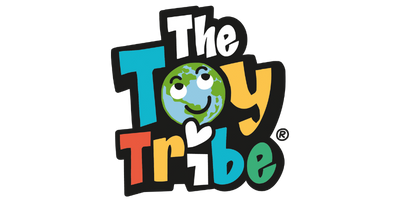Are Plastic Toys Harmful For Children?
Today, we’re seeing more and more brands, like ours, striving to be plastic-free. Plastic-free credentials definitely sound great, but what is the true reasoning behind this movement, what is the danger behind plastic toys and why should it matter to you? We’ll piece it all together for you down below!
Firstly, over the years, there have been many breaking news cases regarding plastics containment of toxins. Alongside the harmful ingredients that can be found in the plastic. This isn’t the case with all toys that contain the material, but they can be found in various scenarios. As children tend to swallow and chew on toys, this is when toxins can become hazardous to children as they can be absorbed throughout the body. Once absorbed this, in turn, can lead to serious health effects.
The toxins can be found in the plastic itself or they can be included in the pigments used to add appealing colours to attract children.
To protect consumers, there are EU regulations for which toxins may or may not be included in toys, however, there are ways products can get around these regulations. For instance, plastic toys may be made of, or contain, polyvinyl chloride (PVC), which contains lead and cadmium – both toxins that have been reported to be harmful to children.
Another is the CE-mark which is an acclaimed sign of quality and that the toys have followed the rigorous EU standards for toys. Though, the EU highlights this marketing should only be seen as an indication, as it suffers misuse due to counterfeiting.
We have suggested the following guidelines when purchasing your toys:
- Buy from trustworthy shops, make sure to take time to research a brand, where they source their materials and what materials they use
- Carefully read the warnings and instructions before purchasing
- Keep up to date and regularly check the EU Safety Gate for recalls and withdrawals of toys
- Opt for wooden and traditional items, even better try those that are made from recycled materials

What is the impact of plastic toys on the environment?
As goes for all plastic, plastic toys are made using fossil fuels, and therefore the production of them contributes to the environmental crisis. Therefore, by simply choosing an alternative to plastic toys this would have a non-detrimental impact on the planet.
Unlike single-use plastics, such as drink bottles, the toy market is not geared towards recycling with most ending up in oceans or landfills, which adds to the ongoing issue of plastic pollution. According to a survey carried out by the British Heart Foundation, 1 in 3 parents admit to having thrown away toys in working conditions. Considering 90% of toys are in some way made of plastic, toys are evidently a large contributor to the ongoing crisis we are facing.
We hope you have learned a thing or two about plastic toys that can allow you to make more informed decisions when you are next shopping. And whilst toys can have a longer life cycle than single-use plastic, they will at some point end up in landfills- or worse in the sea as non-recyclable waste. Here are some top tips to help combat this issue:
- Buy eco-friendly and non-plastic toys, try to aim for toys made from sustainable materials such as recycled cardboard.
- Purchase second-hand toys from charity shops or even online marketplaces on social media or eBay. Be aware, though, when buying second-hand that the toys may not be up to today’s standards
- Donate used toys and recycle properly if possible. Try to either sell them, give them to family and friends or donate them. Businesses such as Toys 4 Life are dedicated to the re-use and recycling of unwanted plastic toys as well as donating these items to children in deprived parts of the world.

